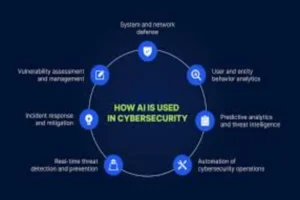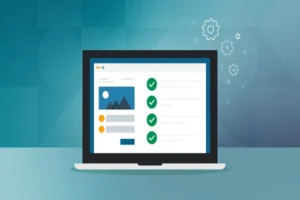The Ultimate Guide to Using Personalization in Email Marketing

Businesses need to nurture their existing audience base continuously to grow their reputation and trust, which in turn can convert them into paying customers. A great way to do that is through email marketing. It offers a way to put out relevant information about what brands sell and guide subscribers along the path to purchase.
Also, at present, generic emails are not enough. Customers expect that what they receive is relevant and personalized. With email personalization platforms, brands have the chance to connect with their subscribers in a better, more effective way, which in turn gives them a greater chance of conversion. By using data points and personal interests unique to every recipient, personalization in email marketing can build a stronger link between a brand and its customers.
Reasons to Leverage Email Personalization
Users subscribing to a company’s email list show that they have an interest in the brand. This group of users can be consistently reached through email campaigns, which helps brands form a strong bond with them. Email personalization platforms can improve the efficiency of these campaigns by sending customized emails to recipients based on their age group, location, interests, behavior patterns, and position in the buying journey.
A truly personalized email goes beyond just using a first name; it is in the customization of the message to that specific individual. This can provide benefits such as:
- Increased Open Rates: Personalized subject heads and preview text, which may hook the customer and create interest, making them more likely to open the email.
- Improved Conversions: Customized offers and suggestions sent via email can result in greater engagement, which in turn increases the number of clicks, interest, and purchases.
- Re-engagement of Inactive Customers: Timely sent personalized email campaigns can bring back those who may have dropped off or are losing interest in a brand.
- Better Customer Experience: Personalization in email marketing enables companies to share useful offers and suggestions that are unique to each customer. This improves the customer’s overall experience with the brand.
Applying Personalization in Email Marketing
Email personalization involves gathering more than simple demographic facts like a customer’s name and age. Companies need to have knowledge of where customers are in the buying journey, what they prefer, and how they actually behave. Companies can apply these insights in different parts of an email using an email personalization platform to improve the recipient’s experience.
- Subject Lines
A customer’s initial impression of an email is its subject line, which might influence whether they choose to read it or delete it. Companies can use the recipient’s name, information relevant to the user’s interest, or the product that they have shown interest in the subject lines. It should also be clear and concise, sharing as much detail as possible while still drawing attention to click.
- Preview Snippet
Notification alerts on both desktop and mobile often show email previews before opening. Companies can use an email personalization platform to display customized content for this preview. This helps to catch the recipients’ interest and make them open the email.
- Main Copy
This is the section of the email where businesses need to make an impression while staying concise. While applying personalization in email marketing, companies need to make sure the copy contains highly relevant and timely suggestions based on customers’ behavior, purchase history, and usage data. Brands can position themselves well with exclusive offers that benefit the preferences of individuals, which can lead to more engagement as well as increased purchase frequency.
- Dynamic Content
Email personalization platforms can help companies change content dynamically based on users’ recent interactions or interests. They can use this dynamic content in main copy, subject lines, and CTAs, and in the form of interactive elements like visuals, video clips, and game-style features like scratch cards or spin-wheels. These parts can change depending on the email’s purpose, such as abandoned carts or dropped searches.
- Timing and Frequency
The timing and frequency of an email are as important as the message inside. Delivering emails at off times can cause users to ignore or get annoyed by them. Email personalization platforms can use available data to target customers when they are most likely to respond.
Also, a customer should not be overwhelmed with too many emails. Through smart segmentation, brands are able to effectively use personalization in email marketing and also fine-tune the frequency of email send-outs in order to keep the interaction at a high level and users satisfied.
Email Personalization Best Practices
To ensure the effectiveness of personalization in email marketing efforts, companies need to follow several best practices. These include:
- Unify Customer Information: Companies can use an email personalization platform to gather all the data of their email contacts into a single platform. This helps them to get a complete view of their habits, choices, and activities across various platforms.
- Follow the Mobile-First Approach: It is essential to make emails mobile-friendly to engage users who often use mobile devices.
- Ensure Privacy: Businesses must follow data privacy laws while using personal information for emails to stay legally safe and build trust.
- Run A/B Testing: A/B testing allows companies to fine-tune their content, email timing, and frequency over time so that they can boost open rates, click-to-open ratios, and conversion rates.
- Get Customers’ Feedback: Customers should have control over how often they receive emails and be allowed to share feedback on what they’re getting. This feedback can help to make personalization improvements.
Bottom Line
Businesses across industries still value email as one of their reliable marketing tools. By applying personalization in email marketing, companies can directly address users’ needs based on their current stage in their journey and stand out from the competition. Email personalization platforms can give recipients a strong, meaningful experience with a brand rather than sending repeated sales pitches to them.
Email personalization can be used by brands and teams across fields to improve how they communicate with their audience. With this, companies can build unique, compelling email interactions that boost customer loyalty and lead to stronger sales and better conversion rates.






